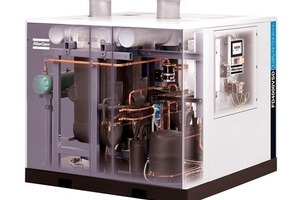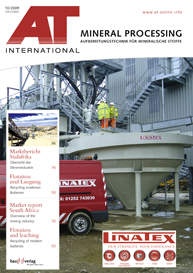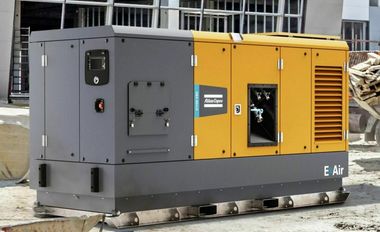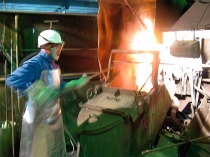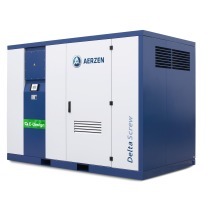Saving energy with refrigeration dryers
If you want to reduce the energy costs of your compressed air supply, you should take a look at your dryers as well as your compressors. Cost savings are possible with variable-speed refrigerating compressors, control of the pressure dew point as well as by minimizing the pressure loss during condensate precipitation. The energy consumption of the compressed air supply can be influenced mainly with modern compressor systems such as speed control (VSD, Variable Speed Drive). Even for supposedly smaller energy consumers, like e.g. refrigeration dryers, energy consumption can be lowered by up to 35 % without any great effort – and that with only low additional investment.
Conventional compressed air refrigeration dryers are usually designed to operate continuously. They always operate with 100-% output – even if this is not always needed – and consume a constant level of energy. Refrigeration dryers with speed-controlled refrigerant compressors (Fig.) on the other hand adjust the energy consumption precisely to match the demand defined based on the moisture load. Alternatively the energy consumption can be reduced with the Saver Cycle control system from Atlas Copco. Here the refrigerant compressor is shut down when volume flows are low or the ambient temperature is high. This enables a significant energy saving. The lower the volume flow, the higher the saving can be. The relative air humidity of the compressed air at the exit from the dryer is kept below 50 % at every point in time. This ensures that all compressed air consumers are protected against corrosion.
Going beyond the control options, the pressure loss of the refrigerating dryer describes the efficiency of the equipment. For the compressed air and condensate must be separated, if possible without any pressure loss. After all, the nominal pressure must be reached. The higher the pressure loss, the more the compressor must compress. In a comparison of two refrigerating dryers, each downstream of a
200-kW screw-type compressor, one working with a pressure loss of 0.35 bar, the other with 0.2 pressure loss, the following could be established: the lower pressure loss of the second dryer alone cuts the energy bill by around € 9000 within five years, assuming 8600 operating hours per year and electricity costs of 0.1 €/kWh.
Atlas Copco Kompressoren und Drucklufttechnik GmbH, Essen (D),
Tel.: +49 201 2177-0,
www.atlascopco.com

